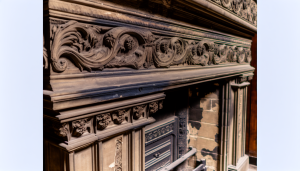Toronto, Ontario — Canada’s rich tapestry of geographical landscapes mirrors its diverse range of heritage home styles, each narrating a distinct chapter of the country’s architectural and cultural history. This exploration into the geographical variations in Canadian heritage home styles reveals not just the architectural diversity but also the ingenuity with which Canadians adapted to their environments and the influences brought by various settlers over the centuries.
Starting on the East Coast, the colorful and closely-knit row houses of St. John’s, Newfoundland, embody the resilience and community spirit of the earliest settlers, who braved the inhospitable Atlantic to carve out a life on Canada’s rugged eastern shores. These homes, often referred to as Jellybean rows for their vibrant colors, are as much a response to the challenging weather conditions as they are a statement of joy amidst adversity.
Moving inland, the architectural scene shifts to the Victorian and Georgian influences that dominate the Maritimes, where Halifax boasts an impressive array of heritage homes that reflect its status as a historical economic hub. The prominence of wood in Maritimes architecture, frequently showcased in the form of intricate gingerbread trim, nods to the abundant natural resources that have historically propelled the local economy.
As we travel through Quebec, the presence of French influence is unmistakably evident in the architecture. From the enchanting stone cottages of Old Quebec to the quaint farmhouses dotting the rural landscapes, these structures embody the French settlers’ architectural heritage, characterized by steep roofs, stone masonry, and a certain je ne sais quoi that captures the province’s unique blend of old-world charm and rugged North American terrain.
Ontario offers a stark contrast with its Upper Canada heritage homes, where British influences merge with the practicalities of colonial life. The red brick Victorian and Edwardian houses prevalent in cities like Toronto and Ottawa speak to a period of wealth and expansion, while in rural areas, the iconic Ontario farmhouse with its simple lines and practical layout reflects the agricultural lifeblood of the region.
As we traverse the expansive Prairies, the shift in architectural styles becomes evident. Here, the heritage homes are fewer and farther between, often replaced by more modern structures designed to withstand the harsher climate. However, pockets of historical architecture survive, notably in Winnipeg’s Exchange District, where early 20th-century buildings recall the city’s boom period.
The Rocky Mountain region of Alberta and British Columbia introduces the influence of the Arts and Crafts movement and the subsequent emergence of the Craftsman style, with its emphasis on natural materials and harmony with the surrounding landscape. This style is particularly evident in cities like Vancouver, where the lush environment has inspired an architecture that seeks to blend indoors and outdoors seamlessly.
In the Canadian North, traditional architectural styles give way to a focus on sustainability and adaptation to the extreme climate. Here, modern techniques are employed to address the unique challenges of the environment, but even these homes nod to the heritage of Indigenous architecture through their use of local materials and designs that respect the land.
Through this varied landscape of heritage home styles, Canada showcases not only its architectural diversity but also its history of settlement, adaptation, and cultural integration. From the brightly painted row houses of Newfoundland to the stately Victorian homes of Ontario and the rustic charm of Quebec’s stone cottages, the geographical variations in Canada’s heritage home styles offer a fascinating glimpse into the country’s evolving identity. In exploring these differences, we uncover not just brick and mortar but the stories of those who built and inhabited these homes, each adding their chapter to the rich narrative of Canadian heritage.








